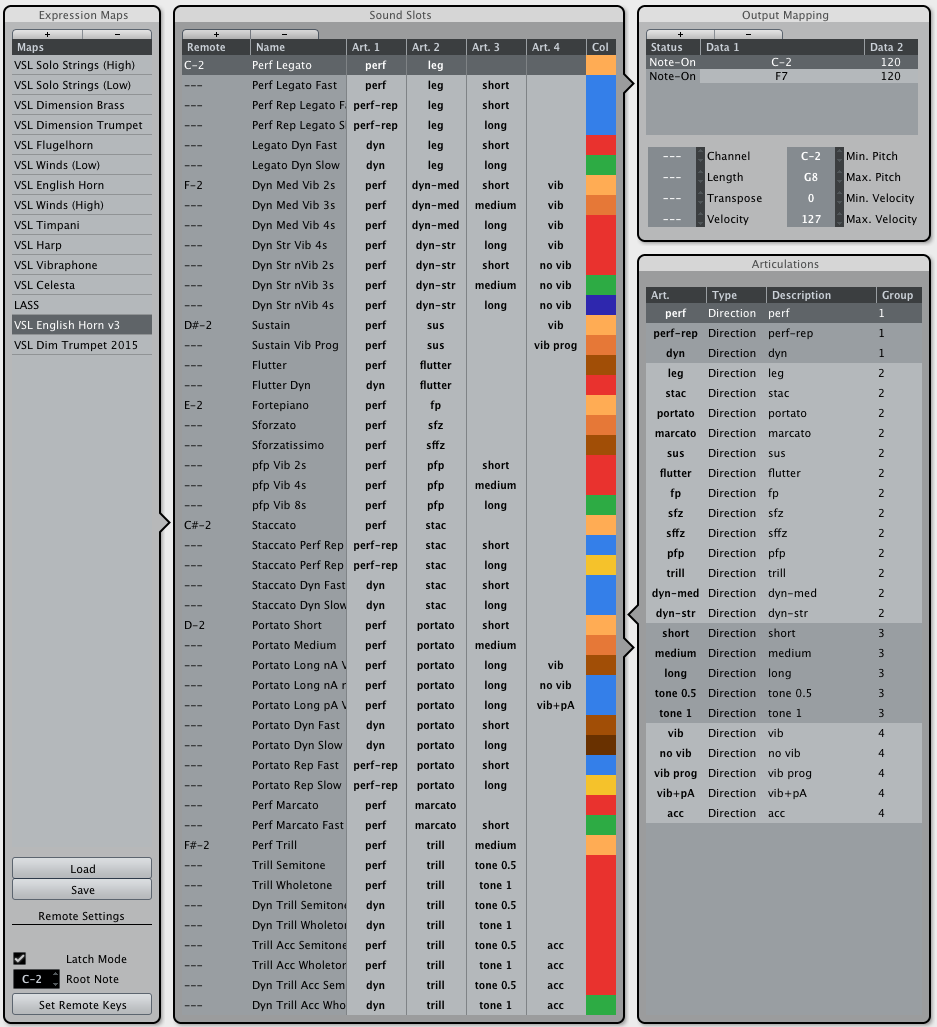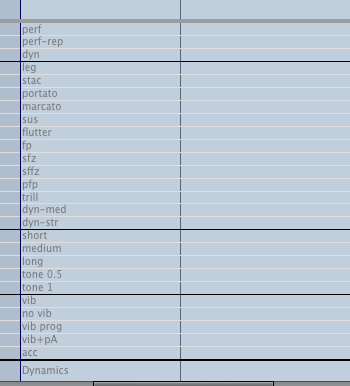Hello Talino.
This particular expression map is for Dimension Strings, and the articulation 3 column (OS - F I - F II - F III - F IV) is for forcing the strings on the instrument. You can have the violin play vibrato on G string (vib + F I) or vibrato on D string (vib + F II) or non vibrato on D string (nvib + F II) and so on.
There are some ways of combining those articulations that prove efficient, and others not.
One I found of great use, especially for all the dynamic patches, is to use articulation 2 as short medium and long, instead of 1 second, 2 seconds, 3 seconds, 4 seconds, 5 seconds, 6 seconds, 8 seconds, which anyway never apply to all the patches.
I also struggled a lot and did many trials of building my own presets with all the available articulations in logical order, knowing that I never play live, but rather program all the prases. It takes me more time to play the phrase and then correct it and then sculpt the articulations, than to immediately program the phrase as I hear it inside.

